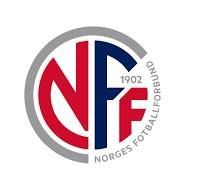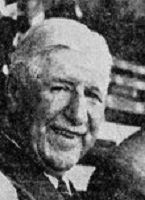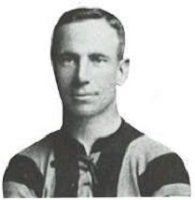Norway

With Norway being one of the two closest Continental neighbours to Scotland and trade between the two so regular it would be understandable if Scots had, as in the other Scandinavian countries, taken the game there. But, apart from the formation of a long defunct club in the then capital of Christiania in 1885 and a few thin indicators of British workers possibly playing it in the 1890s at rural factories, notably the paper-mill at Skotfoss by Skien, where they were temporarily working, Norwegians seem to have been the carriers, from where exactly unclear, that is with the exception of the city of Bergen.


Making Brann?

SK Brann, "Fire" in Norwegian, was born as Bann Ski-and-Football Club out of dissatisfaction with the state of football in Bergen to that date. The year was 1908, with the game having arrived in the city on Norway's South-West coast perhaps two decade earlier. Some reports have it introduced by Danish incomers. The local paper records a game played between visiting British Royal Naval officers in 1886 but to what rules is unknown. However, that game took place on a field next to the Tangen Gardinfabrik, a relatively new curtain, indeed lace-curtain factory and it was, coincidentally or not, at that self same factory that in 1897 a certain lace-weaver, Alexander Boswell Thomson, Sandy Thomson, arrived and spent a couple of years before returning home. He had come, with his new, Swedish wife, and Swedish-born children from working at a lace factory in Gothenburg. He would return with the family to continue to work in the lace industry in his home town, Newmilns in Ayrshire. And in the meantime he had been one of the team of Scots lace-workers that had been the introduction of football to Sweden, specifically Orgryte. One wonders if he had also put on his boots and showed them how on Norwegian soil.
But back to Brann. Its first fixture was played not in 1908 but the following year but for the best part of the next decade it struggled for results. That was until 1917 when fortunes were transformed but the arrival in April of what was initially described as an "English centre-half". However, that description would soon be amended to the far more accurate "Scottish half-back".
The new-comer was twenty-three year old George Deans, so born in 1894 or so. Why he was in westernmost Norway was not immediately clear. It was after all mid-Great War. Where he came from is known, the suggestion being that he had learned his football in Aberdeen, perhaps with Aberdeen itself, although that seems a step too far. It is more likely that he had been turning out for one of the city's junior clubs, Banks of Dee, which from 1902 until pre-War had played its games at Cranford Road on the north side of the river.
Deans' presence seems to have transformed his new Norwegian team. For the first time it made the Norwegian Cup Final, only to lose 1-4 to Sarpsborg from Viken by Oslo with the following year, 1918, seeing a repetition, this time to Kvik. But it was done on both occasions with Deans said to be the outstanding player and with a change of footballing style instituted by him. The play was more on the ground, passes were shortened and his team-mates to move without the ball into space. In short Sport-Club Brann were taught to play the Scottish way and it would serve it well.
Deans would remain in Bergen, playing his football, for, it is said, four years. In 1919 he would be appointed essentially both club and team captain. It was rumoured too that he would be returning to Scotland and perhaps he did briefly. Certainly Bergen football would later that summer receive a visit from Aberdeen that is unlikely to have been coincidental. The visitors were Richmond F.C. It too was a junior club, founded in 1910, with Richmond being an area of the Granite City just west of its centre. Richmond was to play two games, on Sunday 15th June, and the following Tuesday against Brann. Such was the excitement surrounding them, thousands came to watch at its new stadium, where they witnessed in the first fixture a 0-2 loss to the Aberdeen team and a lesson in ball-control and tempo. George Deans took the field for the home team but this time he was not the only Scot. Presumably in his normal position was the Aberdeen and former Scotland right-back Donald Colman, who, before a move a year later as player-coach to Dumbarton, was spending the first of several summers coaching the Norwegian club.
Donald Colman, in addition to a playing career that spanned more than twenty years, will forever be remembered for three further footballing things. He was the inventor at Aberdeen of the dugout. He coached the great Alex Jackson to his debut. And he is also the great-grandfather of none other than Aberdeen-born Rachel Corsie. In fact Colman would die in that same city but it was not where his footballing life, indeed his life, began. In fact he was one of the last of the early player conveyor that was the Leven Vale, and more precisely Renton. He had been born on Main St. in 1878, progressed through the village's Tontine Juniors and debuted for its league team in 1896, effectively the replacement on his retirement for the driving-force of the club, Archie McCall, and two years before its resignation from the top-flight by which time he had moved on to junior Maryhill in Glasgow before at the age of twenty-seven being picked up by Motherwell.
But throughout he took the field under a pseudonym. Donald Colman was born Donald Cameron Cunningham and was a bricklayer to trade. For reasons unknown his family must have disapproved of the exercise of his football prowess but perhaps it was defiance as he chose to play under his grandmother's surname, which then stuck. But back to Norway. The year following the Richmond visit saw the arrival of another Aberdeen team. This time it was Banks of Dee itself and of the three fixtures played Brann would win two. There was clearly improvement. And the year after that it was Dumbarton, where Colman was now player-coach with Jackson, also Renton-born, amongst his charges, although in the game that resulted, a 0-4 win for the Scottish side, he wore the red of Brann and was its best player.
Meanwhile George Deans had moved on. He went, perhaps transferred to the Norwegian capital and there joined Frigg Oslo FK, which with him now in the side replacing Jens Olsen at right-half and alongside Norwegian international, Ellef Mohn, finally took the Norwegian Cup in 1921, again after two successive years as runner-up. And it is in Oslo at Frigg that Deans is said to have remained for the last years of his playing career as back in Bergen the Colman era began in earnest. In 1923 he took Brann to its first Norwegian Cup victory. And he would do it again in 1925, in doing so gaining revenge for the Sarpsborg defeat of eight years earlier before moving to coach at Viking Stavanger. At the same time he was employed by by the Norwegian FA also to lecture throughout the country, a sort of Norwegian Jimmy Hogan, with much the same belief in the basic Scottish principles of footwork, short-passing and ball retention.
Now of the life and career of Donald Colman much is known. After Dumbarton at the age of fifty-three he was in 1931 brought back to Aberdeen to coach under Paddy Travers, the manager at Dumbarton, when he had been coach. And a decade later it would be in Aberdeen that he would die. However, of his joint Brann pioneer there is much less of a record but there are clues. In October 1946 a fifty-eight year-old army officer, so born in about 1888, travelled from Hull to New York. He was Scottish, born in Aberdeen but with a last address in Oslo and his name was George S. Deans. He stood 5ft 8ins tall, had fair hair and blue eyes and his mother, Mrs J. Deans, appears to have been still alive, living still in Aberdeen at 80 Great Western Road. Great Western Road is, perhaps coincidentally, just a short distance from the then and the present Banks of Dee grounds.
But there is a problem. There is no matching George Deans with a mother, whose name began with a J. and born in Aberdeen in the year in question. But there was one six years later, in 1894, the other date mentioned for his birth. His mother's name is Jane and, moreover, his middle name is Sherriff, so S. Perhaps it is he, with a lie or a simple transcription error the cause of birth-year confusion. And furthermore in 1901 they are living just north of the city centre, half a mile from the Richmond Hill area. It might all be just coincidence. But for the other maker of Brann it is more or less the best we have. There is no record of his death, at least just now, but we do have a probable photo. It is said that he scouted Norwegian football not for Aberdeen but Rangers and at the Norway-Bulgaria game that took place in Oslo in 1957 he is pictured in the Ullevaal Stadium between two other Scots, both of whom had the strongest of connections with the Ibrox club. f the
